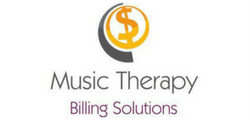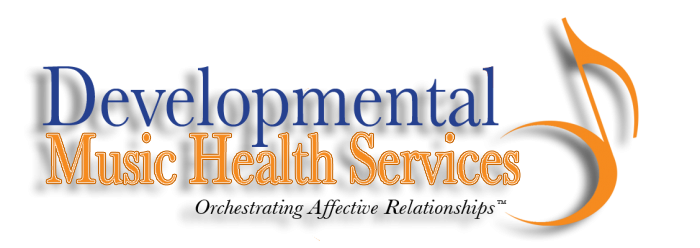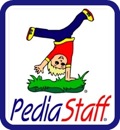There have already been two people this week who have contacted me about my websites. They are ready to launch their own and are doing some background research, getting ideas and “here’s how I did it” stories from others who have been there.
When it comes to websites, there are a lot of options these days. And it can be overwhelming, especially if you are just starting out.
Although I am by no means an expert in the field, I do have some “real world” experience that may help. Some tips and ideas based on my successes…and my failures. Hopefully these will help you.
There’s lots of jargon and lingo when you start venturing into the online world. Social media, Web 1.0 , Web 2.0, web hosting, just to name a few. I will try to clarify some of these terms while offering you concrete ideas and suggestions to help get you started.
, Web 2.0, web hosting, just to name a few. I will try to clarify some of these terms while offering you concrete ideas and suggestions to help get you started.
There are a couple of basic things you will need to get your website up and running:
- Web Hosting. This is like an online lease. There are companies that “own” internet space (also called “server” space). You can generally get web hosting from a minimal monthly fee, usually $5-10 a month. There are many web hosting services and options available: Go Daddy, Yahoo, PowWeb…too many to list.
- Content Management System (CMS). Technically, websites are created, updated, and changed by altering the internal code, called HTML (“Hyper Text Markup Language,” if you’re interested). Learning HTML code is like learning a whole new language. In the early days of the internet, you would have to learn this language if you were doing anything online. These days, lucky for us, you can have a CMS. A CMS is software that allows you to make changes to your website…without learning HTML code. It facilitates content creation (e.g. the material you put on your website), editing functions, and your basic website maintenance. Although there are probably many CMS software platforms out there, my web designer set me up on Joomla! for my Neurosong website.
- Domain Name. A domain name is what you type into your address bar that send you to your website. The most common ones end in “.com”, “.net”, or “.org” (educational domain names end in “.edu” and government domain names end in “.gov.”). Usually domain names spell out the company name (e.g. www.neurosong.com or www.musictherapymaven.com). There is a minimal annual fee to purchase, or own the rights, to a domain name, usually $10-15 a year. Several companies sell domain names, including Go Daddy, 1and1, and many others. You should also know that you have the option to purchase multiple domain names (e.g. neurosong.com, neurosong.net, neurosong.org, etc.). The experts out there debate on whether or not it’s smart business practice to purchase multiple names. Me? I think it depends on how common the name you want is. Yes, it’s probably smart to get multiple ones, but not necessary. (That said, I would highly recommend, if you do choose to get multiple names, make it easy on yourself and get them all from one company. I buy and manage all my domain names through Go Daddy).
There are other terms you will run into and learn as you go on this journey, but these will help get you started.
Now for the “big picture” stuff. This may be simplistic, but in my head I like to differentiate between having a “static” site and having a “dynamic” site.
- Static Website. These are what web gurus call “Web 1.0.” These are sites that simply post information. It’s one-way communication. An example would be my company site, www.NeuroSong.com. This is a place where I have posted information about music therapy, about the company, and about our services. That’s it. The information is just there for you to read. There is no exchange, no dialogue between myself and the readers. And the information, or content, does not change that frequently.
- Dynamic Website. Those “in the know” call this “Web 2.0,” the newest development in your web presence. These sites are ones whose content is frequently updated. These sites are ones that work to facilitate dialogue between the site creator and the readers. An example would be this blog. The content of this blog is updated and changed 2-3 times a week. You, the reader, can easily leave comments. There are more ways for you to contact me. And since the content is continually changing, there’s more reason (hopefully!) for you, the reader, to keep coming back for more.
And although simplistic, that’s how I distinguish between these two sites. Technically, they work like this:
- Neurosong Site. I hired a graphic designer to set up my company site, including web hosting and email. I asked for a Content Management System (CMS). The graphic designer got everything set up on Joomla!, then trained me on how to update the site. Now, I or my assistant (who I trained) go in occasionally to update the content. My domain name is from Go Daddy.
- Blog. There are many free blog platforms available: Blogger and WordPress (the .com one) are common. They are easy to set up and easy to use. You can also use WordPress (the .org one) on a self-hosted site, which is how the Music Therapy Maven works. Since I already have web hosting services, I attached the self-hosted WordPress platform to my Neurosong site. In fact, look at the address bar above. You’ll see that the domain name “MusicTherapyMaven.com” sends you to “www.Neurosong.com/KimberlysBlog”. That tells you that Neurosong is hosting this blog.
As an aside, what I really liked about finding a graphic designer who got me set up online is that we worked to create a whole image for my business. And I use that image on all my marketing materials (business cards, brochures, marketing folders), which adds a level of professionalism and consistency to my business.
And another point to make is that, yes, it is possible these days to set up everything on your own. But it will take you longer if you are having to learn as you go. It may be worth the money to hire someone else to get your site up and running, then train you on how to maintain your site. That’s what I did. And for me it was worth to cost to have an expert set everything up. Know that you have that choice.
If you have any others tips or suggestions, please share them below! There are so many options, you may know something that will greatly help someone else. You never know.


 orcid.org/0000-0001-8665-1493
orcid.org/0000-0001-8665-1493






{ 5 comments… read them below or add one }
How appropriate to put this up now, when I’m thinking of doing the same things! Sure, I have CIMusicResearch.com but that’s for work at UIHC and I have paid someone to create the banner and the content, which I can manage when needed. Thanks!
Nice! So you are in the process of getting it updated now? Let us know when it’s finished! And if there is anything you learned that you want to share with others, please come back and let us know. Kimberly
Hey there, Kimberly-
Thanks for the helpful hints. I will need to look into this sooner or later (my music blog is pretty easy because of the particular web hosting service), and I appreciate all the info I can get.
.-= Roia´s last blog ..Battling inertia one session at a time =-.
Many thanks, I enjoyed reading this, best to you.
Thank you for sharing these tips it still makes sense. Such evergreen tips.
You must log in to post a comment.
{ 2 trackbacks }